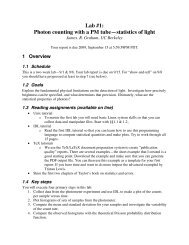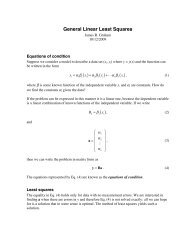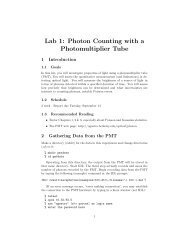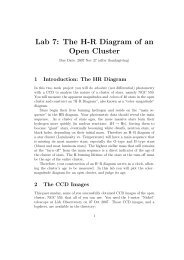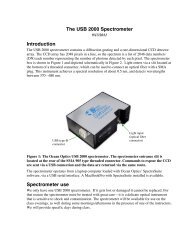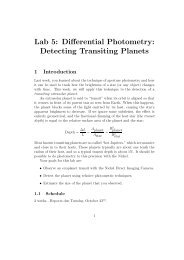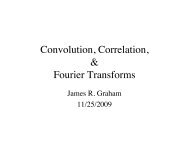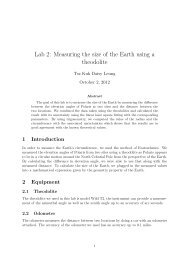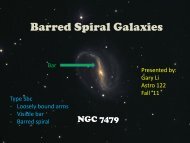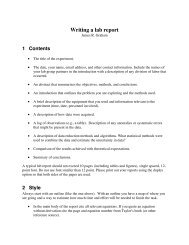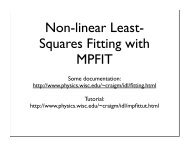Lab 6: Double Einstein Ring System SDSSJ0946+1006 - UGAstro
Lab 6: Double Einstein Ring System SDSSJ0946+1006 - UGAstro
Lab 6: Double Einstein Ring System SDSSJ0946+1006 - UGAstro
Create successful ePaper yourself
Turn your PDF publications into a flip-book with our unique Google optimized e-Paper software.
d ∼( ) ( )c (z + 1) 2 − 1H 0 (z + 1) 2 + 1(3)As such, for bright <strong>Einstein</strong> ring systems, both the distances between theobserver and the lensing object, and between the observer and the annulus,can be measured. If additionally the angular separation between the lensingobject and the annulus is measured, we can use the two distances andEquation (2) to solve for the mass of the lensing galaxy.3 Equipment and Observation3.1 Hubble Space TelescopeThe Hubble Space Telescope (HST) utilizes a 2.4 meter primary mirror orbitingat 559 km from the ground to take images free from atmosphericdistortion. Our dataset made use of the now retired Wide Field and PlanetaryCamera 2 (WFPC2), consisting of three Wide Field Cameras (WF1,WF2, and WF3) and one higher resolution, but correspondingly smaller fieldof view Planetary Camera (PC). All four cameras contained an 800x800 pixelsCCD detector. The three Wide Field Cameras possess a plate scale of 0.1arcsec/pixel, while the Planetary Camera possess a finer plate scale of 0.046arcsec/pixel.3.2 ObservationOur dataset were obtained from the online Hubble archieve 4 . We selectedfour datasets of <strong>SDSSJ0946+1006</strong> taken using HST’s WFPC2 camera utilizingthe F606W filter. These datasets have HST proposal ID 11202 andPI Leon Koopmans of the Kapteyn Astronomical Institute. For all datasets,we chosed to download the pipeline calibrated version, meaning that ourimages were already corrected for flat fields, geometric distortions (such asvigneting), dark counts, and bias.Our field consisted of observations from four cameras of the WFPC2.The three Wide Field Cameras are arranged to have an ’L’ shaped field ofview, measuring 160 arcseconds across its two long edges. Nestled at the4 at http://archive.stsci.edu/hst/4




